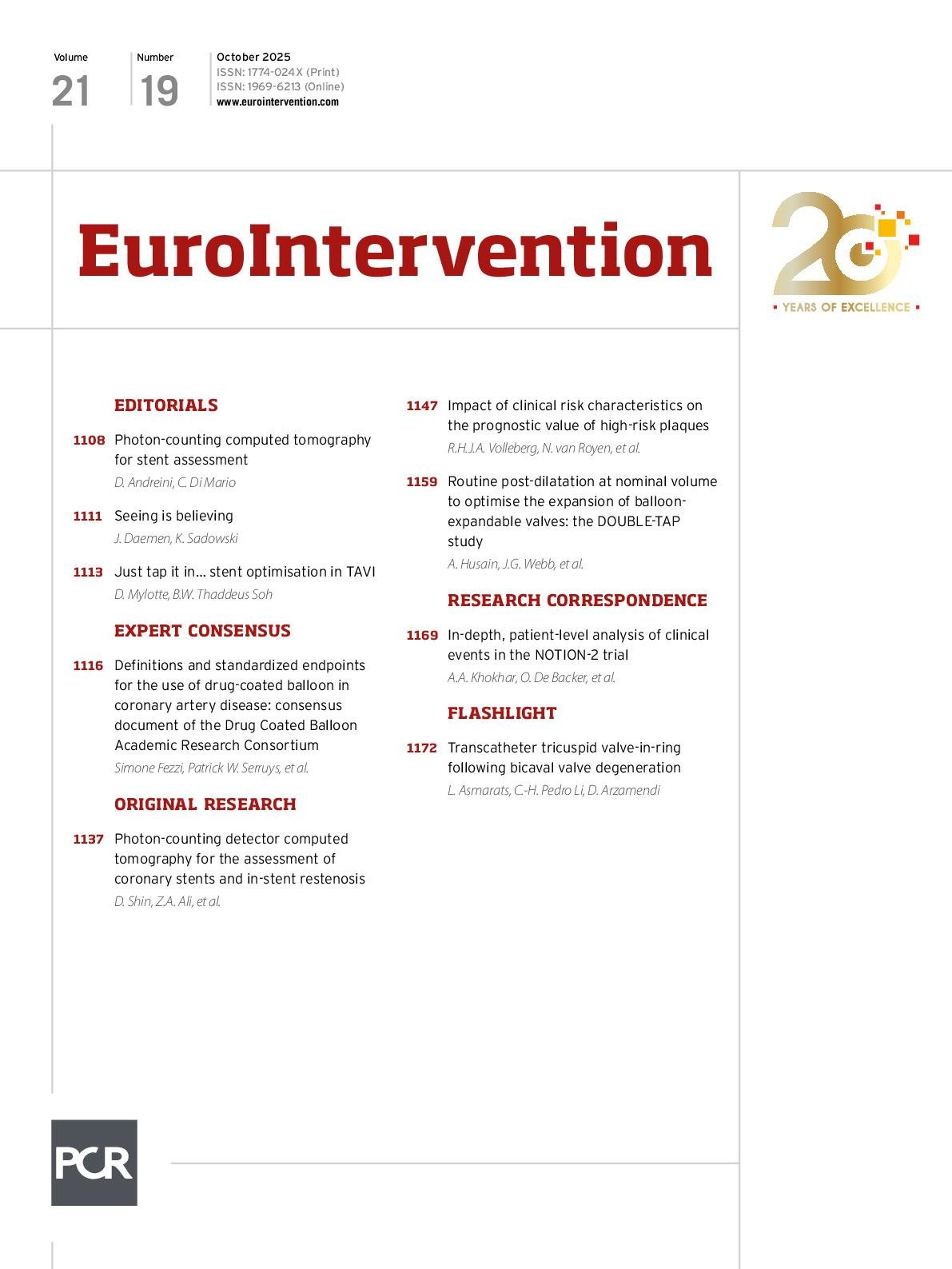Abstract
Background: Photon-counting detector computed tomography (PCD-CT) offers enhanced spatial resolution and reduced blooming artefacts, potentially improving the evaluation of stented coronary vessels.
Aims: This study aimed to assess the diagnostic performance of dual-source PCD-CT in detecting obstructive in-stent restenosis (ISR).
Methods: We identified consecutive patients with prior coronary stent implantation who underwent clinically indicated coronary computed tomography angiography (CCTA) with PCD-CT and subsequent invasive coronary angiography within 90 days between 2023 and 2024. Obstructive ISR (≥50% diameter stenosis) was determined by visual assessment of CCTA and invasive quantitative coronary angiography (QCA) in a blinded fashion. The diagnostic performance of CCTA for ISR was compared with that of QCA.
Results: A total of 283 stented lesions from 171 patients were included. Of these, only 3 lesions (1.1%) were deemed indeterminate by PCD-CT. Using invasive QCA as the reference standard, PCD-CT demonstrated a lesion-level sensitivity of 80.0%, specificity of 90.4%, positive predictive value (PPV) of 58.2%, negative predictive value (NPV) of 96.4%, and an overall diagnostic accuracy of 88.9% for detecting obstructive ISR. In a subgroup analysis according to the stent diameter (<3.00 mm [n=83] vs ≥3.00 mm [n=108]), there were no significant differences in sensitivity (87.5% vs 86.7%; p=1.00), specificity (93.3% vs 92.5%; p=1.00), PPV (58.3% vs 65.0%; p=1.00), NPV (98.6% vs 97.7%; p=1.00), or overall diagnostic accuracy (92.8% vs 91.7%; p=1.00), respectively.
Conclusions: PCD-CT demonstrated good diagnostic performance for evaluating obstructive ISR using QCA as the reference standard, regardless of stent diameter.
Sign up for free!
Join us for free and access thousands of articles from EuroIntervention, as well as presentations, videos, cases from PCRonline.com

